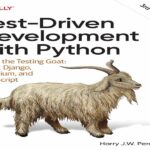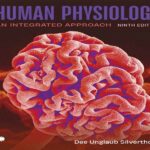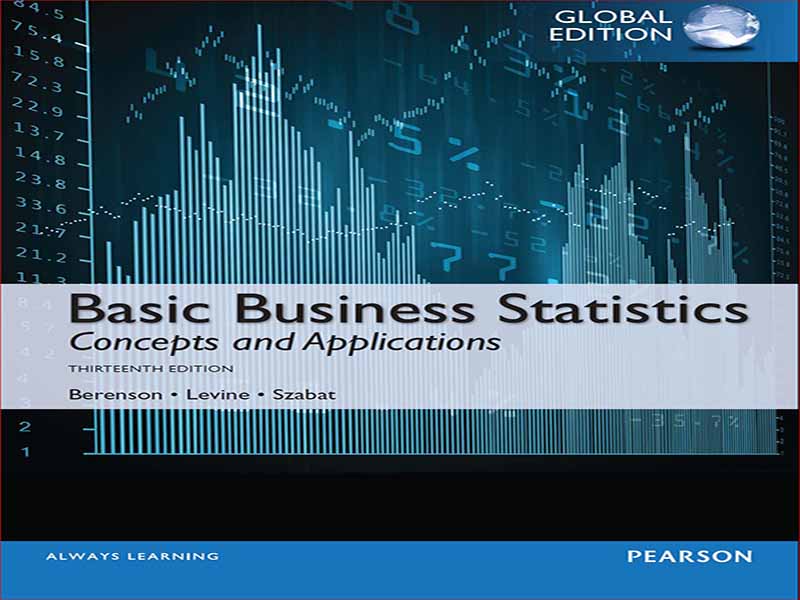- عنوان کتاب: basic business Statistics
- نویسنده: Berenson , Levine , Szabat
- حوزه: آمار
- سال انتشار: 2015
- تعداد صفحه: 842
- زبان اصلی: انگلیسی
- نوع فایل: pdf
- حجم فایل: 17.2 مگابایت
بیش از یک نسل پیش، پیشرفتها در «پردازش دادهها» به فرصتهای تجاری جدید منجر شد، زیرا ابتدا محاسبات متمرکز و سپس رومیزی افزایش یافت. عصر اطلاعات متولد شد. علوم کامپیوتر بسیار فراتر از یک برنامه درسی ریاضیات الحاقی شد و زمینههای مطالعاتی کاملاً جدیدی مانند سیستمهای اطلاعات کامپیوتری پدیدار شد. اخیراً، پیشرفتهای بیشتر در فناوریهای اطلاعات با تکنیکهای تجزیه و تحلیل دادهها ترکیب شده است تا فرصتهای جدیدی را در علم دادهای بیشتر از پردازش داده یا علوم رایانه ایجاد کند. دنیای آمار کسب و کار بزرگتر شده و به رشته های دیگر برخورد کرده است. و در تکرار اتفاقی که یک نسل پیش رخ داد، رشتههای مطالعاتی جدیدی، این بار با نامهایی مانند انفورماتیک، تجزیه و تحلیل دادهها و علوم تصمیمگیری پدیدار شدند. این زمان تغییر باعث می شود آنچه در آمار کسب و کار آموزش داده می شود و نحوه آموزش آن حیاتی تر شود. این رشته های تحصیلی جدید همگی آمار را به عنوان پایه ای برای یادگیری بیشتر به اشتراک می گذارند. ما عادت کردهایم به تغییر فکر کنیم، زیرا جستجوی راههایی برای بهبود مستمر آموزش آمار کسبوکار همواره تلاشهای ما را هدایت میکند. ما فعالانه در کنفرانسهای موسسه علوم تصمیمگیری (DSI)، انجمن آماری آمریکا (ASA) و مؤثرتر کردن آمار در مدارس و تجارت (MSMESB) شرکت میکنیم. ما از گزارشهای دستورالعملهای ASA برای ارزیابی و آموزش (GAISE) استفاده میکنیم و آنها را با تجربیات خود در آموزش آمارهای کسبوکار به یک مجموعه دانشجویی متنوع در چندین دانشگاه بزرگ ترکیب میکنیم. اینکه چه چیزی را باید آموزش داد و چگونه آن را آموزش داد، سؤالات مهمی هستند که باید در زمان تغییر پرسید. ما بهعنوان یک تیم نویسنده، مجموعهای منحصر به فرد از تجربیات را به ارمغان میآوریم که معتقدیم به ما کمک میکند دیدگاه مناسبی را در ایجاد تعادل بین کهنه و جدید پیدا کنیم. دو نویسنده اصلی ما، مارک ال. برنسون و دیوید ام. لوین، اولین مربیانی بودند که کتاب درسی آمار کسب و کار را ایجاد کردند که در آن با استفاده از نرمافزار آماری بحث میکرد و «خروجی رایانه» را به عنوان تصویر گنجانده بود – اولین مورد از بسیاری از نوآوریهای آموزشی و درسی در خود. چندین سال تدریس آمار کسب و کار جدیدترین همکار ما، کاترین A. Szabat، توصیه های آماری را به جوامع مختلف تجاری و غیرتجاری ارائه کرده است. پیشینه او در تحقیقات آمار و عملیات و تجربیاتش در تعامل با متخصصان در عمل، او را به عنوان رئیس دپارتمان در ایجاد یک بخش دانشگاهی جدید و بین رشتهای، سیستمهای تجاری و تجزیه و تحلیل، در پاسخ به تغییرات مبتنی بر فناوری و دادهها در کسبوکار راهنمایی کرده است. امروز.
Over a generation ago, advances in “data processing” led to new business opportunities as first centralized and then desktop computing proliferated. The Information Age was born. Computer science became much more than just an adjunct to a mathematics curriculum, and whole new fields of studies, such as computer information systems, emerged. More recently, further advances in information technologies have combined with data analysis techniques to create new opportunities in what is more data science than data processing or computer science. The world of business statistics has grown larger, bumping into other disciplines. And, in a reprise of something that occurred a generation ago, new fields of study, this time with names such as informatics, data analytics, and decision science, have emerged. This time of change makes what is taught in business statistics and how it is taught all the more critical. These new fields of study all share statistics as a foundation for further learning. We are accustomed to thinking about change, as seeking ways to continuously improve the teaching of business statistics have always guided our efforts. We actively participate in Decision Sciences Institute (DSI), American Statistical Association (ASA), and Making Statistics More Effective in Schools and Business (MSMESB) conferences. We use the ASA’s Guidelines for Assessment and Instruction (GAISE) reports and combine them with our experiences teaching business statistics to a diverse student body at several large universities. What to teach and how to teach it are particularly significant questions to ask during a time of change. As an author team, we bring a unique collection of experiences that we believe helps us find the proper perspective in balancing the old and the new. Our two lead authors, Mark L. Berenson and David M. Levine, were the first educators to create a business statistics textbook that discussed using statistical software and incorporated “computer output” as illustrations—just the first of many teaching and curricular innovations in their many years of teaching business statistics. Our newest co-author, Kathryn A. Szabat, has provided statistical advice to various business and nonbusiness communities. Her background in statistics and operations research and her experiences interacting with professionals in practice have guided her, as departmental chair, in developing a new, interdisciplinary academic department, Business Systems and Analytics, in response to the technology- and data-driven changes in business today.
این کتاب را میتوانید از لینک زیر بصورت رایگان دانلود کنید:
Download: basic business Statistics





































نظرات کاربران